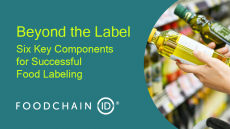Hope on the horizon
Research by North Carolina State University scientists, in
conjunction with scientists from the Netherlands and biotechnology
company BioResource International, has shown that, under proper
conditions, an enzyme can fully degrade the prion - or protein
particle - believed to be responsible for mad cow disease and other
related animal and human diseases.
These transmissible prions - believed to be the cause of bovine spongiform encephalopathy (BSE), the technical name for mad cow disease, as well as the human and sheep versions, called Creutzfeldt-Jakob disease and scrapie respectively - are highly resistant to degradation, according to Dr Jason Shih, professor of biotechnology and poultry science at NC State. But the new research, which tested the effects of a bacterial enzyme keratinase on brain tissues from cows with BSE and sheep with scrapie, showed that, when the tissue was pretreated and in the presence of a detergent, the enzyme fully degraded the prion, rendering it undetectable.
The research was published last month in The Journal of Infectious Diseases.
Shih's colleagues in the research study included first author Jan Langeveld, Dick Van de Wiel, Jan Garssen and Alex Bossers from the Central Institute for Animal Disease Control in Lelystad, the Netherlands, and Giles Shih and Jeng-Jie Wang from BioResource International, which is located on NC State's Centennial Campus.
The researchers now plan another study to test the effectiveness of the enzyme on the treated BSE prions in mice. The two-year study begins in January 2004 and is being funded with $190,000 from the National Cattleman's Beef Association.
"Our work has been done in vitro, or in test tubes, and we've reduced the prion to undetectable levels," said Shih. "Our work with mice will show whether these undetectable levels of prion are indeed non-infectious."
Shih will also test keratinase's effectiveness in decontaminating equipment that processes animal by-products. Many scientists believe that mad cow disease is spread by healthy animals eating feed containing by-products from BSE-infected animals. Using keratinase to gobble up harmful prions on the processing equipment would go a long way in reducing the risk of spreading mad cow disease, Shih believes.
This study to optimise the degradation process is funded for two years with $180,000 from the Food and Drug Administration. Shih says in lieu of using actual BSE materials, which are quite dangerous to work with, researchers will use a surrogate protein produced from yeast that has similar physical and chemical properties, but is non-pathogenic.
Shih hit upon the idea of using keratinase to degrade prions based on his more than two decades of work as a poultry scientist looking for ways to manage poultry waste. He discovered that a bacterium, Bacillus licheniformis strain PWD-1, could degrade chicken feathers. Shih isolated and characterised the bacterial enzyme keratinase, and then isolated and sequenced the gene that encodes keratinase. By fermentation technology, he was able to develop a way to produce mass quantities of the enzyme, and did studies that proved many valuable applications of the enzyme.
Shih found that keratinase can be added to chicken feed to increase digestibility and the efficiency of the feed; that is, chickens who eat feed with the enzyme grow to optimal weight quicker and need less feed to grow to that optimal weight. The enzyme thus can provide the same benefit in feed that antibiotics currently provide. Animal producers are looking for safer substitutes to antibiotics, and Shih believes that keratinase can serve that purpose.















